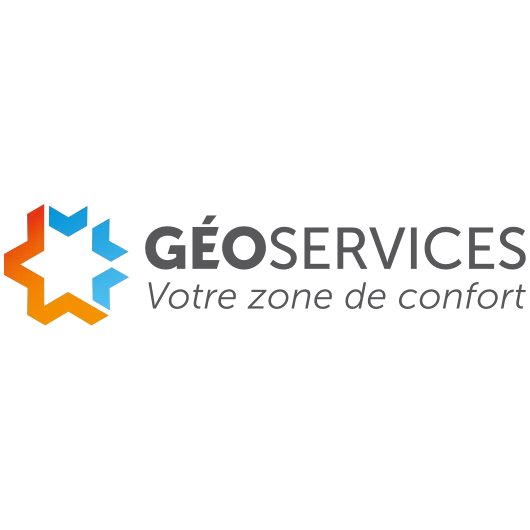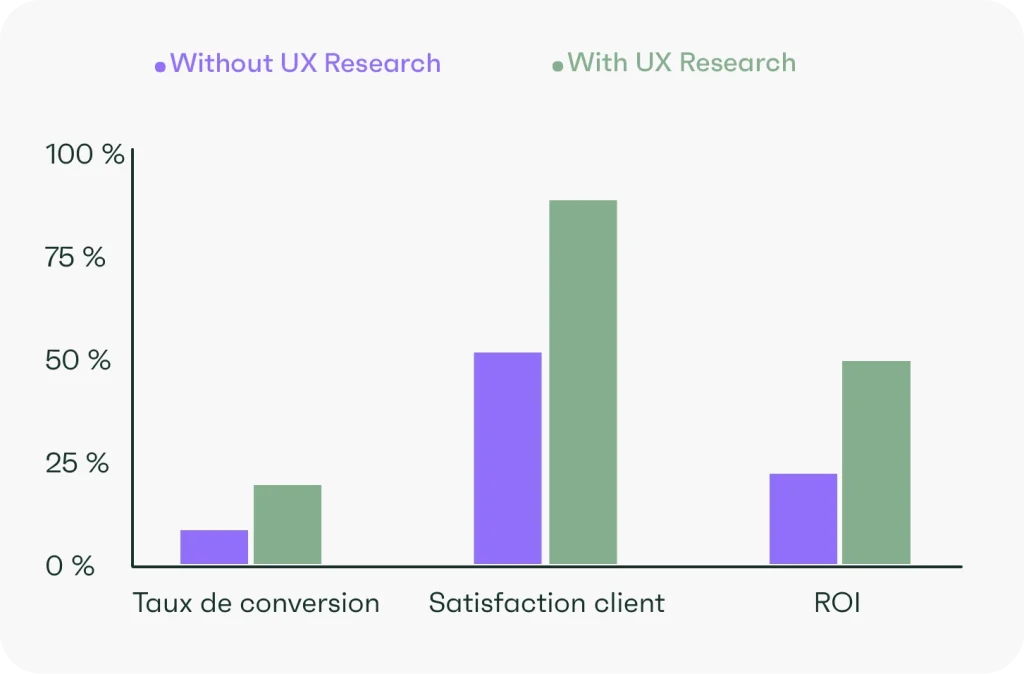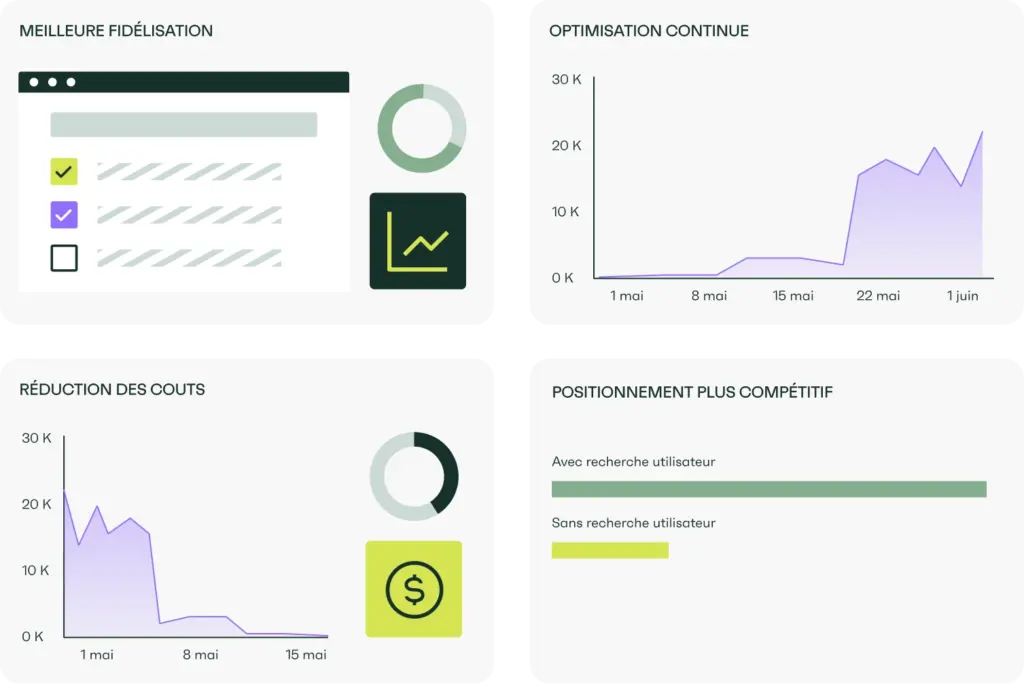Align your products or services with the real expectations of your users
Understanding your users means designing experiences that truly meet their needs. Through UX Research, we identify friction points, analyze behaviours, and test solutions to optimize the digital experience and maximize engagement.
They entrusted us with their UX Research projects









Our methodology is based on a rigorous approach that combines observation, testing, and behavioural analysis to create optimal experiences. Here are the key steps in our methodology:
We identify the issues to explore based on business goals and user needs.
We use various methods such as user interviews, A/B tests, heat maps, and analytics platforms (Google, Adobe, Semji, SEMrush, Hotjar, Power BI…) to understand behaviours and expectations.
We map journeys to identify friction points and improvement opportunities.
We conduct real-life tests to observe how users interact with your interface and adjust solutions accordingly.
We provide a detailed report with actionable recommendations to optimize user experience and improve engagement.
UX Research is an evolving process: we analyze feedback after each iteration to continuously improve your product.

70% of companies that invest in UX Research see significant improvements in conversion rates and customer satisfaction. An optimized user experience boosts engagement, reduces friction, and increases profitability.

This strategy allows you to tailor your product to the real needs of your users and optimize every digital touchpoint. Here’s why you should invest:
Research is not limited to a one-time improvement of your site or app; it is part of an ongoing process that fuels and enhances your overall digital strategy. By better understanding your users’ expectations, behaviours, and pain points, you can more effectively adapt your interfaces and content.
In the long term, it enables:
By making it a key driver of your digital strategy, you’re laying the foundation for sustainable, high-performance growth.

UX Research helps understand user needs and expectations to design optimized interfaces and enhance digital experiences.
We combine qualitative approaches (interviews, observations, user testing) and quantitative ones (data analysis, heat maps, surveys).
It depends on the project scope, but a UX study can last from a few weeks to several months, depending on the depth of the analysis.
It should be included from the design phase and throughout the product lifecycle to ensure continuous improvement.
No, any company can benefit from it, regardless of size or industry, to improve its digital performance.
KPIs such as conversion rate, engagement rate, and user satisfaction rate help evaluate the effectiveness of implemented optimizations.